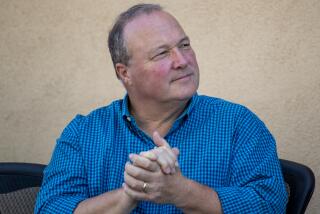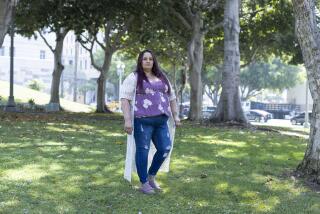DARE or Not? Schools Review Anti-Drug Efforts
Every day, thousands of preteen students don their bright red DARE T-shirts and listen politely as uniformed police officers educate them on everything from cocaine to cigarettes, then warn of the dangers involved with illegal drug use.
But this scene, played out in 17-week sessions on elementary and middle school campuses across Orange County, could be in for a change. Because of new state and federal requirements and a growing dissatisfaction with the effectiveness of the widely used DARE (Drug Abuse Resistance Education), officials are preparing for a different kind of drug war.
Already, several Orange County school districts are beginning to assess the continued use of DARE, and many more are gearing up to research alternatives to the expensive and often criticized program.
Tustin Unified School District recently launched a project to study the effectiveness of the DARE program, used in its 10 elementary and three middle schools.
“Over the last year there has been a lot of press about DARE, and the board is interested in getting a clearer picture of what is involved,” said Chris Wall, the district’s coordinator of safe and drug-free schools. “They’re interested in any time that’s spent outside of [teaching] general education.”
Wall added that a newly established committee will study what alternatives are available to provide drug education, including private organizations such as Project Northland and Project Star.
*
Under newly adopted U.S. requirements that provide federal funds, local school districts are required not only to offer education in drug and alcohol resistance, but also must prove the effectiveness of the programs they implement.
The beefed-up federal guidelines have helped motivate several conservative school board members in such communities as Orange and Tustin to begin questioning the effectiveness of drug education.
In its effort to respond to the federal requirements, the state Department of Education has just released a guidebook outlining methods for determining whether programs either reduce student drug use or have a so-called “promising approach,” evidence that shows the programs could potentially reduce drug use.
That guidebook states that DARE, used by itself, doesn’t lead to reduced drug use by students.
“We’re not telling districts to stop using it, but we’re not telling them to use it, either,” said Greg Wolfe, a consultant with the state Department of Education. “We’re not encouraging it.”
Linda Kearns, the Orange County Department of Education’s program coordinator for safe and drug-free schools and tobacco education, said districts across the county will have to reassess how they provide drug awareness education before next fall.
“We will be asking districts to comply with new principles of effectiveness,” Kearns said. “Just because a program is popular doesn’t mean it’s effective.”
Ralph Lochridge, director of communications for Inglewood-based DARE America, said DARE founders never expected the program to solve the nation’s drug problem.
“It’s absurd to expect that in 17 one-hour lessons in the fifth grade, we’ll solve the drug problem,” he said.
Lochridge, a former spokesman for the U.S. Drug Enforcement Administration, added that the high number of school districts using the program--75% nationwide--proves that educators support the program.
Sal Garcia, a psychologist for the Garden Grove Unified School District, said about 8,000 students in the district’s 43 elementary schools currently receive DARE training, and there is no move to eliminate the program in one of the county’s largest districts.
“We have a state mandate about teaching drug and alcohol awareness,” Garcia said. “DARE is a vehicle to provide those services.
*
The Buena Park school district had its DARE funding discontinued when the City Council withdrew its support last year. Mayor Gerald N. Sigler said the City Council, faced with $1.5 million in cuts, couldn’t justify paying for city police to teach DARE.
Phyllis Reed, student and community services specialist for the Buena Park school district, said a health committee has developed a new program combining textbooks with other materials to bring drug and alcohol awareness to sixth-, seventh- and eighth-graders.
“We’re hoping to cover a lot of the stuff the DARE officers covered,” Reed said.
Huntington Beach City School District consultant Don Pate said the government’s strict requirements are similar to an edict handed down 30 years ago that required schools to teach Spanish in sixth grade.
“They didn’t give us any way to implement it, and in a few years it was gone,” he said.
Rod Skager, professor emeritus of education at UCLA and a longtime researcher of drug awareness programs, said research shows that DARE “has no effect on reducing drug use.”
“The basic concept of telling kids that drugs are bad for them doesn’t work,” Skager said. “We have to get rid of these pie-in-the-sky notions that we’re going to get rid of drugs. We’re not. We have to take a different approach.”
Skager advocates programs that educate parents as well as students and “give kids a chance to talk about drugs.”
The educator added that schools and communities need to work together to establish ways of identifying and helping kids in trouble.
Getting past hysteria over drugs and realizing that there are students who will try drugs but not become addicted is also important, Skager said.
“We go on backing programs that don’t have any results at all,” Skager said. “Research shows it’s wasted time. We need honesty and discussion rather than lecturing.”
More to Read
Sign up for Essential California
The most important California stories and recommendations in your inbox every morning.
You may occasionally receive promotional content from the Los Angeles Times.










